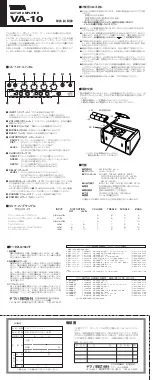
To provide for the extra power contained
in the AM signal
modulation
it
is necessary
to "over-couple"
the output
circuit.
This is necessary
to insure
an undistorted
out-
put with a minimum of adjacent channel "bleeding':
(Spatter)
Reapply drive power and advance the load control
unti I the
red visual
output
indicator
dims perceptably,
( about
15
per cent more rotation).
Readjust the tune control
for max-
imum output.
The output circuit
is now "over-coupled".
If a relative power output indicator
is available
(SWRbridge
on forward,
etc.) the output signal
can be quickly
checked
to Insure upward modulation.
If the meter does not "flick"
upward on ~oic~ peaks, the load control
is improperly
set,
(or the exciter
IS
not capable
of 100 per cent modulation
or may have "downward
modulation").
.
Automatic
antenna change over and ampl ifier
operation
is
provided
for by a special
transistorized
input sensing cir-
cuit.
Should you desire to hold the amplifier
ina
"ready"
condition,
but not use it
unti I needed, simply
place
the
Stby-Oper
Switch in the Stby position.
The sensing circuit
will
be disabled
and the antenna connected
to the exciter
(transceiver)
at
all
times.
The amplifier is tuned for FM service in a manner identical to AM
(""".
exceptthe
load and tune controis
are set for maximum output.
No change in brilliance of the output indicator will be noted with
modulation.
Place the function
switch in the SSB position. This will connect a
delay circuit
to
the automatic
relay control
and extend the
"drop-out"
approximately
one second. This will prevent relay
"chattering"
and erratic operation.
If the exciter (transceiver) is capable of carrier output equal to
the peak power of the voice SSB or DSB signal, simp:y adjust the
tune and load controls for
maximum
brilliance of the output
indicator while applying carrier.
If the exciter (transceiver) cannot supply a carrier equal to the
peak power of the voice SSB or DSB signal then the tune and
load controls must be set for maximum output while modulating.
In this case, a modulation
envelope indicator (monitor
scope) is
the mo!?treliable method for adjustment of the amplifier.
Place the function
switch in the SSB position, apply drive power
and adjust the tune and load controls for maximum output.
The delay circuit for SSB prevents "drop-out"
of the automatic
antenna relay between characters.
Remove knobs and replace controls
cover before putting
the
Amplifier
into business
radio service.
For operation on the six meter amateur band is necessary to short
out three turns (from the left hand side asviewed from the front
panel) of the Pi-network output coil, L 1. The 100 pf silver mica
capacitor
across C8, (load capacitor-) must be removed. C17
should be reduced to 5pf also.
,The low pass fi Iter on the output must be shorted out.
This
can be done by soldering
a wire from the input to the output
and removing
the three
silver
mica capacitors
(180pF and
240pF) from the small circuit
board connected
to the output
socket.
REMOVE FOR 8 Mt.nR
AMATEUR
BAND
OPERATION
IOOpf CAPACITOR
ACCROSS e-8
A portion
of the incoming signal is coupled to the base of 02,
sensing transistor. This causes02 to conduct and change the !:lias
on 01, relay transistor, 01 conducts heavily and closes relay K 1.
Relay K1 connects the input signal to the cathodes of V1 and V2,
applies plate voltage to V1 and V2, and connects the output
circuit to the antenna.
C9 is the Pi-net tune capacitor.
sets the operating frequency to
the antenna.
C8 is the Pi-net load capacitor and controls the coupling to the
antenna.
For SSB operation, C14 is added to the relay transistor circuit to
extend the "drop out" time.
Содержание 480
Страница 4: ...Ii I I t l _____ 1 ...
























